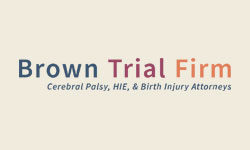Are AFE clots a sign of medical malpractice, or bad luck?
Like many maternal injuries (injuries to the mother), amniotic fluid embolism (AFE) can result in complications for both mother and child. Those complications can range from lifelong medical issues to death.
But how can you tell when carelessness, misdiagnosis, or another type of malpractice led to AFE, or if the amniotic fluid embolism was inevitable?
Only an experienced and knowledgeable birth injury attorney can help you get to the bottom of this question. But in the meantime, here is what you need to know:
What is amniotic fluid embolism?
Amniotic fluid embolism (AFE), also known as anaphylactoid syndrome of pregnancy (ASP), is a rare but serious condition that occurs when the amniotic fluid surrounding an unborn child enters the mother’s bloodstream. Other fetal material, such as cells, hair, or other detritus can also initiate AFE.
Fetal material entering a mother’s bloodstream can and does happen with no consequences for most women. Unfortunately, for a select few individuals, the fluid or cells can trigger a severely negative or allergic reaction in the mother as the fetal material enters her circulatory system.
What causes AFE?
AFE isn’t fully understood, but it’s mainly observed to occur when there’s a breakdown of the placental barrier. That breakdown can come from injury or trauma and serves as the means for the fluid or material to pass into the mother’s circulatory system.
The trauma or injury usually occurs during labor, but can also occur right before or after. For example, the placenta can remain in the mother after the delivery and allow fluid and material to enter her bloodstream. This can all occur during a cesarean delivery (C-section) as well.
AFE occurs when the mother’s immune system treats the fluid or materials as a potential threat, which can trigger a severe immune response. That inflammatory response can lead to blood clotting in the blood vessels and lungs. From that moment on, increasingly detrimental health effects will start to occur.
What are the signs and symptoms of AFE?
During the first stage of amniotic fluid embolism, cardiac arrest can stop the heart. This, in turn, can also lead to respiratory failure. The first stage is the most critical as maternal death can easily occur at that point. Women may also experience vomiting, seizures, nausea, and a host of other symptoms as their bodies go through the trauma.
Those symptoms can also serve as signs that AFE is about to occur. The patient may experience high anxiety and agitation while showing irregular or abnormal vital signs leading into the major conditions of AFE. In cases where AFE starts before the mother delivers, the symptoms can also cause fetal distress.
The next stage of AFE includes severe hemorrhaging. The blood loss can lead to more complications, up to and including the death of the mother. Combined, the symptoms of AFE can lead to multiple organ failures. The whole process happens quickly, and death can occur within an hour from any 1 or more of these symptoms.
What are the statistics and risk factors of amniotic fluid embolism?
When AFE happens, it can be devastating. However, one study looking at the intersection between AFE and medical malpractice lawsuits for AFE shows that the condition is uncommon to rare.
Statistics show that AFE occurs in roughly 1 delivery out of every 40,000 in North America. Of those incidences, the morbidity and mortality rate ranges rather widely between 20-60 percent. This variance comes from the fact that it’s not always initially clear if the death or injury occurred because of AFE or due to another factor.
The risk factors of amniotic fluid embolism aren’t well known. Some evidence suggests that age, placental abnormalities, eclampsia, uterine ruptures, and other conditions can disrupt or damage the placental barrier, which increases the possibility of AFE occurring.
In addition, medical accidents, malpractice, and negligence can cause AFE. For example, some procedures, induction methods, and operations can accidentally or negligently lead to some of those risk factors occurring.
What treatments are available for AFE?
Because of the misunderstood and sudden nature of AFE, there is no truly dedicated treatment of amniotic fluid embolism. Instead, treatment of the individual symptoms must happen as they occur. Treatment of amniotic fluid embolism can include:
- Blood transfusions
- Hysterectomy
- Hemostatic resuscitation
- Oxygenation
- Various emergency procedures
AFE falls under the category of a medical emergency, so various means to treat it quickly and effectively may have to occur to stabilize the patient. Since the symptoms of AFE can present very differently depending on the patient, medical professionals must make fast decisions with the intention of saving the life of the mother, infant, or both.
Both women and infants who survive AFE may require treatment in the form of a rigorous amniotic fluid embolism management regimen. Surviving AFE can lead to long-term or lifetime medical issues for some. Those issues can include, but aren’t limited to, neurological disorders and permanent organ damage. Children who survive often end up with cerebral palsy and other serious birth injuries.
Can negligence lead to an amniotic fluid embolism?
AFE can occur before, during, and right after delivery. This means there are a lot of opportunities for a medical professional to make a mistake, skip a step, fail to diagnose or misdiagnose the situation. Even when both mother and child survive AFE, there’s a high chance of birth injuries that will persist.
AFE is extremely difficult to diagnose due to the speed at which symptoms appear. However, it is often possible to determine if some form of negligence played a role in a birth injury or death. For example, even if there’s no direct diagnosis of AFE, there’s still the possibility the medical professional delivering care failed to take the proper steps to deal with any one of the serious symptoms associated with AFE.
While AFE isn’t fully understood, maternal and birth injuries are. Many maternal and birth injuries are preventable and occur as a direct result of negligence. Those who suffer from that negligence deserve compensation.
At the Brown Trial Firm, our birth injury lawyers can help you determine what steps you need to take if you suspect medical malpractice caused you or your child injury. Contact us right now for your free consultation.
- Cerebral Palsy
- Caput Succedaneum and Cephalohematoma
- Neonatal Intracranial Hemorrhage (Childbirth Brain Bleeds)
- Hydrocephalus (Extra Fluid in the Brain Cavity)
- Cervical Dystonia
- Hemiplegia (Brain or Spinal Cord Injury)
- Hemorrhagic Stroke
- Neonatal Stroke
- HIE
- Periventricular Leukomalacia (PVL) Brain Injury
- Infant Seizures
- Spastic Diplegia (Spasticity in the Legs)
- Top Risks for Birth Injuries
- Fetal Alcohol Syndrome
- Facial Paralysis
- Spinal Cord Injuries
- Bell’s Palsy
- Brachial Plexus Nerves & Erb’s Palsy
- Klumpke’s Palsy
- G-Tubes for Newborns
- Medical Errors
- Cesarean Section & Birth Injury
- Negligence in Brain Cooling Treatment
- Craniosacral Therapy
- Occupational Therapy
- Speech Therapy
- Transition From Pediatric to Adult Healthcare
- Surgical Options for Spastic Cerebral Palsy
- Fetal Intolerance to Labor
- Jaundice (Kernicterus)
- Breech Position
- Placental Complications
- Umbilical Cord Problems
- Uterine Rupture
- Cervical Incompetence (Insufficiency)
- Blighted Ovum
- Necrotizing Enterocolitis (NEC) - Intestinal Inflammation
- Cephalopelvic Disproportion
- Meconium Aspiration Syndrome
- Amniotic Fluid Embolism
- Birth Injury from Premature Delivery
- Developmental Delays
- Abnormal Cord Insertion
- Infections at Birth
- Chorioamnionitis Bacterial Infection
- Premature birth
- Oxygen Deprivation
- Listeria
- Birth-Acquired Herpes
- Placenta Previa
- Placental Abruption
- Mismanaged Fetal Malposition
- Rapid Labor
- Obesity Related Birth Injuries
- Intrauterine Growth Restriction
- Blood Clots During Pregnancy
- Ectopic Pregnancy Misdiagnosis
- Myths & Facts About Birth Injuries
- Bacterial Vaginosis
- Gestational Diabetes
- Maternal Mortality Risk
- Oligohydramnios (Low Amniotic Fluid)
- Infections During Pregnancy
- Excessive Bleeding During Pregnancy
- Congenital Syphilis


